Once we were satisfied with the fit of the inner cowl wood it was removed and the inside of the cowl was sprayed with Dupont DTM Epoxy.
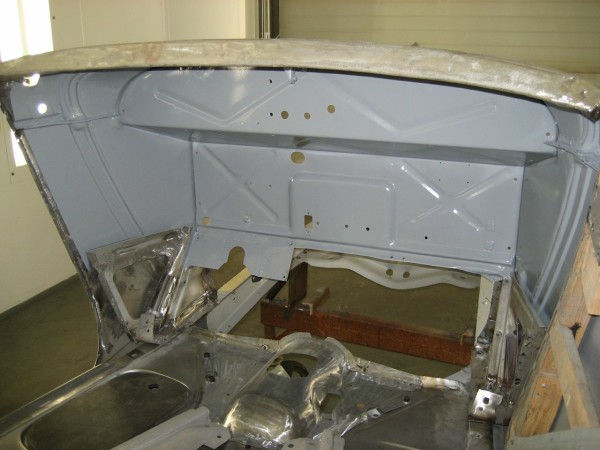
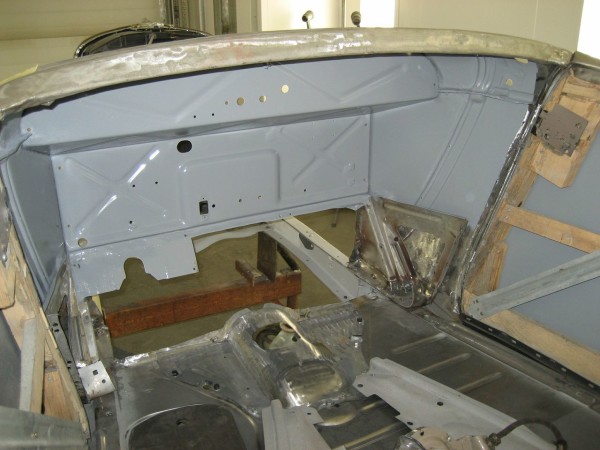
We then reinstalled the cowl wood for the final time. It won’t be removed again in my lifetime.
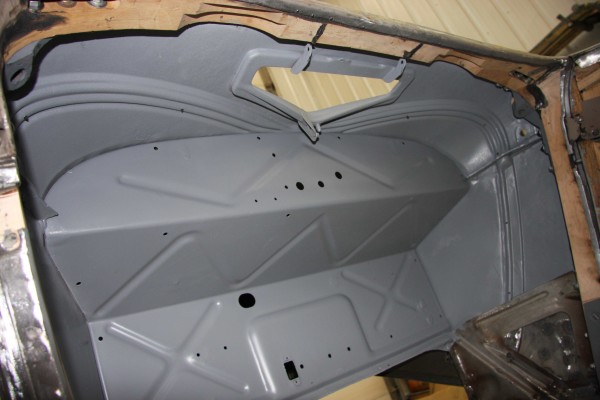
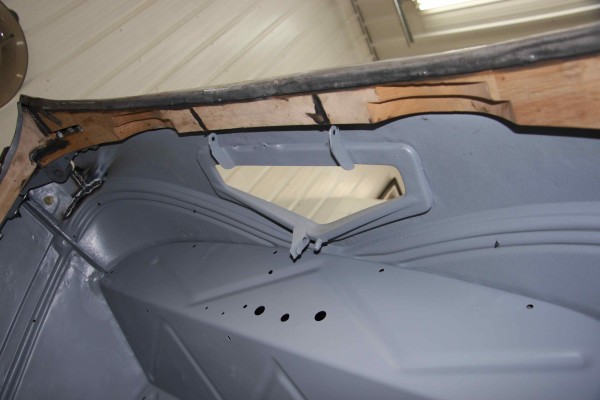
The overall fit of wood is just like the factory original. If your cowl wood integrity is compromised in any way it should be replaced.
Humidity is the enemy of wood, especially fitted wood and its a rare car that hasn’t seen its fair share of humidity. Wood can absorb moisture and expand, or dry out and contract. If you look back at my previous post “Fitting the 34 Roadster Cowl Wood” you’ll see just how badly the original wood had deteriorated over time.
Convertible cars are an engineering nightmare. By removing a car’s top, you compromise its structure and reduce its strength in virtually every plane. A convertible is a wet noodle, with vastly reduced torsional stiffness. When driving an older convertible, you can get the sense that the steering wheel and dashboard are moving in a different direction than yourself and unfortunately, they are. Known as “cowl shake” the flexible body phenomenon has plagued convertibles since Henry Ford started building them. Just drive your convertible over a set of railway tracks and watch the cowl movement where the cowl meets the top of the doors. The last thing you want is a suicide door to inadvertantly pop open!
Again, if the wood isn’t perfect replace it! That includes repairing or replacing damaged Cowl A-pillars and L Brackets. Typically the L brackets are rusted out or damaged in some way and I’ve posted how to reproduce the L Bracket in a prior post “ED Solari’s 34 – Roadster Cowl A-Pillar L Bracket Templates” and these templates are to scale.
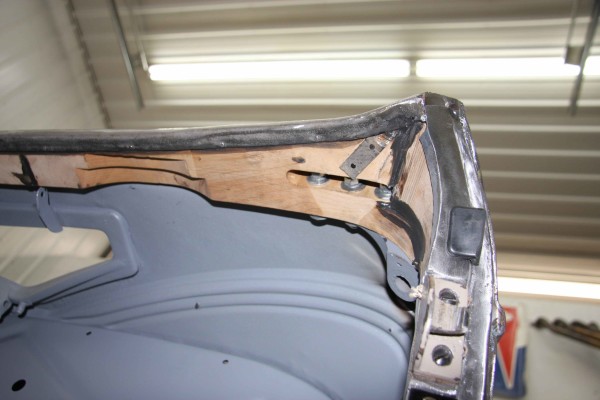
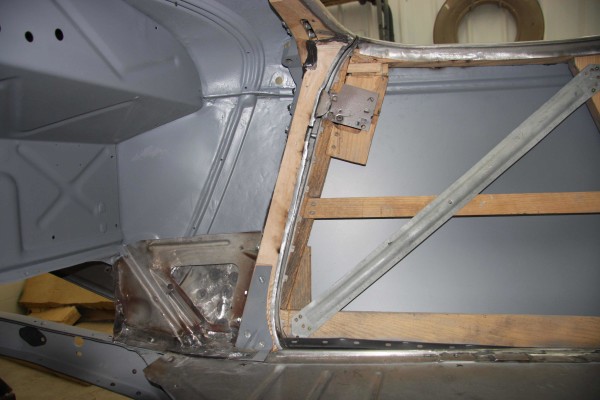
At the cowl A-pillars and L Brackets we sprayed Dupont DTM Epoxy primer in behind the cowl wood, but didn’t spray either A-pillars because they still need a little more work.
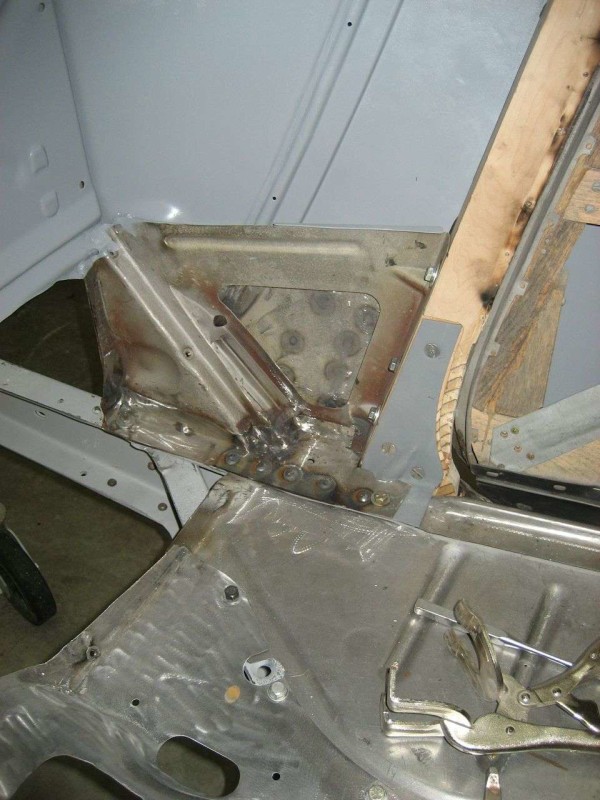
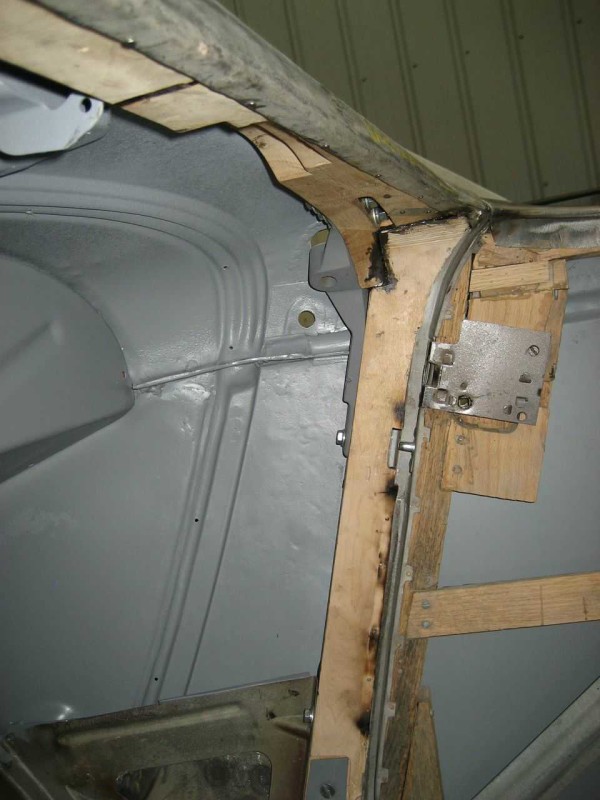
There is a metal tab that is nailed at both top corners of the cowl wood and I’ve seen a few cars where these tabs were missing. The rolled over metal edge of the cowl underside is also nailed intermittently along its entire length.
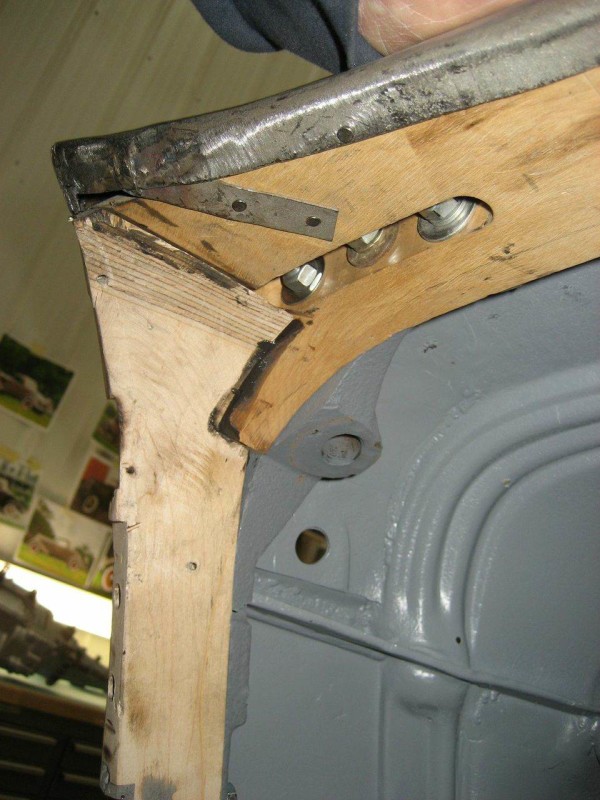
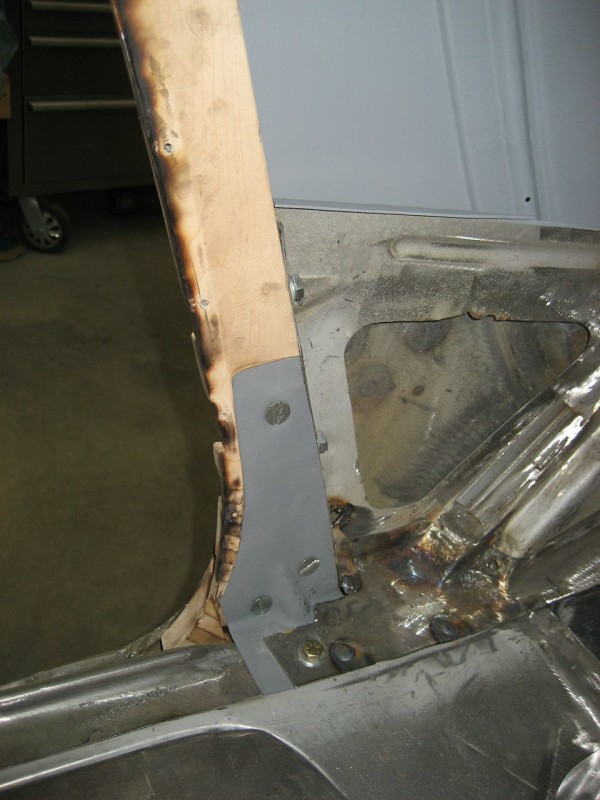
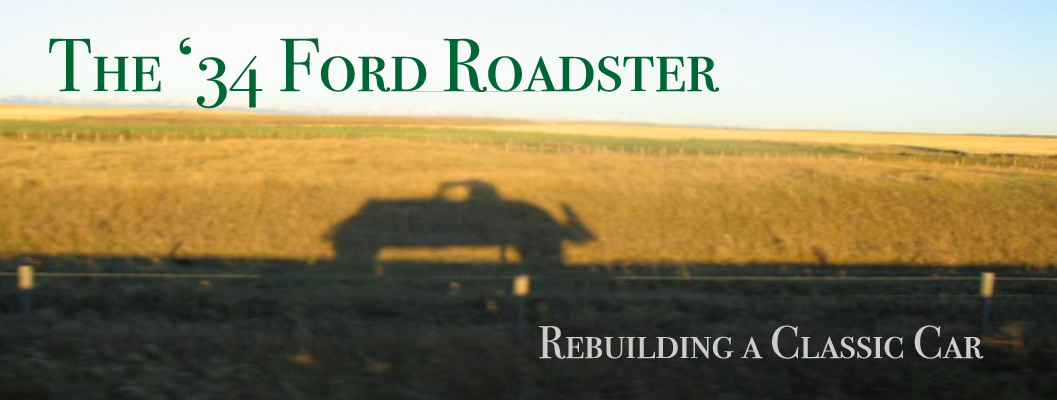

Comments on this entry are closed.
I like the work that you are doing! Keep it going. I am also restoring a 1934 Ford but being part time wood worker, I took an extra step by sealing all of the wood using a spar varnish used for treating wood on sailboats. Upon reading your cowl wood replacement, you have said a lot about wood absorbing moisture and you are correct, however, in the photos it doesn’t look like you have sealed your wood. Maybe it just doesn’t show up in the pictures? Maybe you talk about sealing the wood elsewhere on your site? If you haven’t sealed your wood, why not? I highly recommend sealing the wood. Regards, Mike
Why does the wood look burned in the drivers side of the cowl?
Thanks,
Tim
Tim the cowl header wood is installed first, then you complete the metal work for the door jams from top to bottom and that is why the wood is slightly burnt. When we disassembled the original cowl wood which was installed in the factory the wood was also burnt in the same basic areas especially in the top corners on each side of the metal cowl. Both sides of the cowl corners had been lead filled to finish the top of the door jams and on both sides of the top corners of the original cowl wood was charred in the corners.